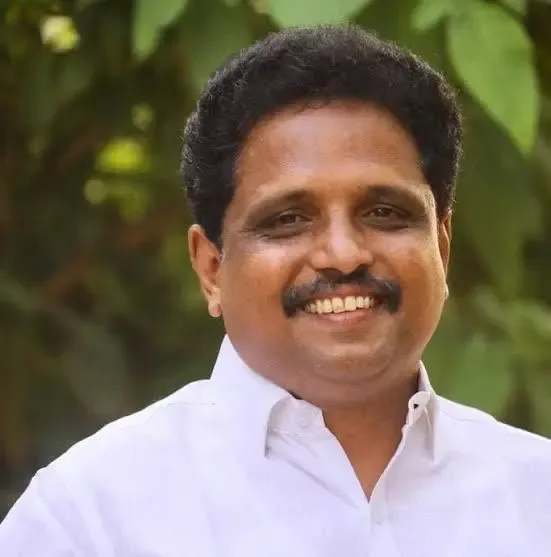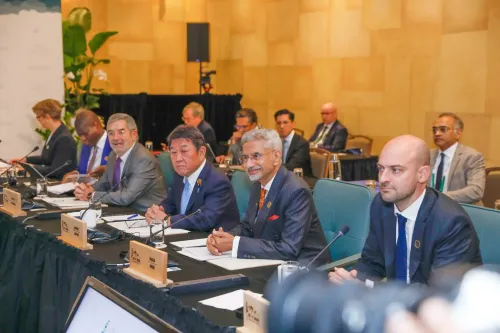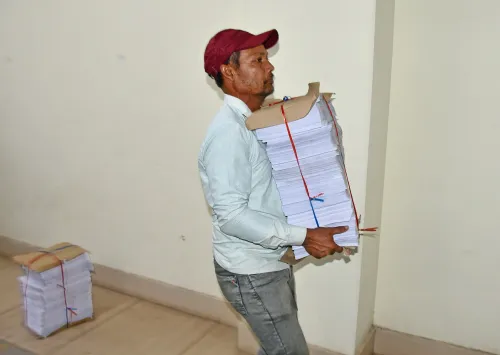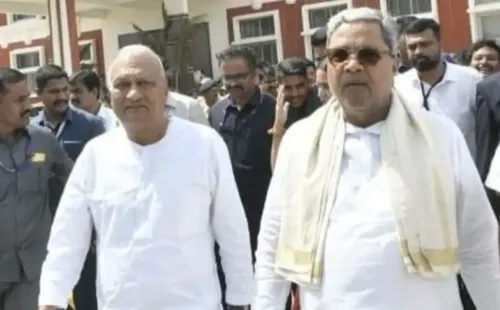Is the Centre Favoring Gujarat Over Tamil Nadu in Archaeological Funding?

Synopsis
Key Takeaways
- Tamil Nadu has received significantly less funding for archaeological excavations compared to Gujarat.
- CPI-M MP Su Venkatesan highlights concerns about favouritism in funding allocations.
- Key archaeological sites in Tamil Nadu are not receiving adequate financial support.
- The Union government needs to address regional disparities in funding.
- Equitable support for all states is essential for preserving India's rich heritage.
Chennai, July 28 (NationPress) Madurai's CPI-M MP Su Venkatesan claimed that the Union government has been consistently neglecting Tamil Nadu in the distribution of funds for archaeological digs over the last five years.
He highlighted that the state garnered a mere 9.8 percent of the total funds allocated by the Archaeological Survey of India (ASI) since 2020, whereas Gujarat received an inflated 25 percent.
Venkatesan referred to data shared by the Union Ministry of Culture following a query in the Rajya Sabha on July 24 by his fellow CPI-M MP A.A. Rahim from Kerala.
The response indicated that Gujarat was granted Rs 8.53 crore for archaeological projects, with an astonishing 94 percent of this amount being utilized in Prime Minister Narendra Modi’s hometown, Vadnagar.
In stark contrast, Tamil Nadu was allocated just Rs 3.36 crore during the same timeframe.
On the social media platform X, Venkatesan expressed his concerns about the regional disparity in the Centre’s strategy for heritage preservation and archaeological investigations.
"This exemplifies favoritism,” he stated. “While Gujarat is inundated with financial resources, Tamil Nadu—renowned for its rich ancient heritage—remains overlooked."
The annexure to the Culture Ministry’s response detailed numerous excavation sites in Gujarat, such as Vadnagar, Vihar, Sarwal, and Lothal, which collectively received over Rs 700 lakh from 2020 to 2024. Notably, Vadnagar alone was allocated Rs 328.5 lakh in 2021—the highest allocation for any site in the nation.
Conversely, Tamil Nadu’s archaeologically significant locations like Adichanallur, Kodumbalur, and Vadakapattu were allocated significantly lower amounts, despite their acknowledged historical importance, according to Venkatesan.
The MP, who has been tirelessly advocating for enhanced funding from the Centre for archaeological research in Tamil Nadu—given the state’s substantial contributions to Indian civilization—also criticized the Prime Minister in light of recent political discourse lauding him as a unifier of India’s civilizational heritage.









